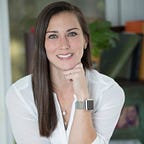My Blind Spots on Racial Differences
One Saturday morning, I decided to pop-up into the office to check on the teams that were working that day. The office was usually half-empty on the weekends but that day it was louder than ever. There were two guys, Alex, an African-American and Joe, a Latino, in the middle of a screaming match across aisles. Alex, was clearly shaken and in so much rage that I pulled him aside quickly to talk.
I wanted to understand what had happened that got him so upset, and he told me verbatim:
“Mari, that guy called me a “N****r”.
I am terrified now by the thought of not knowing the implications of the “N-word” at that time. I was a leader in the office, managing operations of hundreds of people and I didn’t understand why that word caused Alex to feel the way he was feeling.
I knew about protective classes. I had learned all the HR rules — How to be fair in my decisions, how to run equal accountability. But I had a huge blind spot. I didn’t know much about the history, the years of oppression, the inequality.
Part ignorance-Part Privilege.
You don’t know what you don’t know until you NEED to know it. After that day with Alex, my eyes were seeing different things, my ears hearing different things. I wanted to learn more about it…And, the truth is: I became nervous. I wasn’t sure if I was being “appropriate” anymore and honestly avoided talking about anything race-related for a while.
I wasn’t raised in this country and I was never taught or got exposed to racial differences growing up. And this is me, speaking from a very privileged place. I am a white female that grew up in an upper middle-class. Unless I say a word and you hear my accent, you wouldn’t think I’m a Latina, so yes, race (or racism) was not a topic I ever stopped to think about.
Fast forward a few years, I’m still learning about race inequality.
I recently picked up a book called “We can’t talk about that at work!” by Mary-Frances Winters, an advocate for equality and an expert in diversity and inclusion in corporate environments. In the book, she covers how to talk about Race, Religion, Politics and other polarizing topics. This is a book intended to raise our awareness around our differences, to take a proactive approach to bold conversations that keep people divided, and do it from a standpoint of understanding.
“Organizations do not operate in a bubble; what is happening in the external world has a direct impact on employees, and they are talking about it at work whether we like it or not.” Mary-Frances Winters
We all want to feel included. It’s a human thing. And at work, “inclusion drives engagement” (Based on a Gallup study).
There was another study conducted by The Winters Group that backed up those results and concluded that: “When employees feel that they are psychologically safe, they are also more engaged and innovative”.
The book also talks about how most people try to practice the “Golden Rule”: Treating others the way you want to be treated.
Winters though, encourages the readers to learn and apply the “Platinum Rule”: Treating others the way they want to be treated. For that though, you must have some level of understanding about others.
My learning journey after this book.
After finishing the book, I reflected on the biggest lesson I got from it. Besides a greater sense of curiosity about these topics, my mindset shifted from thinking:
-We are all the same, to
-We are all different and we experience life differently depending on our race, social status, political views, religion or sexuality.
Accepting that we are all different, but that we can find similarities on what we want in our lives, is a great start to better understand each other. For me, it has driven a deeper sense of curiosity and it makes me brake before judging others.
An extension from that learning was Winters’ recommendation to watch “13th”, a Netflix documentary that looks at the prison system in America and our nation’s history of racial inequality (watch trailer).
I watched it three times (as I played it for others in my family). The documentary exposes how through the justice system, even after the end of segregation, practices have been systematically created to disenfranchise the African-American race as a whole. In my opinion, this is a “must-watch” for everyone.
Final thoughts for this post…
I understand this is how the world works right now. Whether I like it or not, people will be quickly judged by how they look before they even say a word. I find that to be very sad and unfair.
It is difficult to change people and the world for better days. Setting goals around it feels overwhelmingly impossible. But I know that it has to start with me.
Learning about life from how others (that look, love, pray different than me) experience it has been life changing and has driven me to be more thoughtful, more aware and more empowered to stand up for people being disregarded, disrespected or judged too quickly.
I continue to have questions. I want to provide better support and I am still learning how. But, beyond questions, I have a sense of responsibility to learn more about how others experience life from their standpoint.
I’m here, sharing this, wanting to raise more awareness, more conversations, more questions.
And the learning goes on…
Mariana
